- info@shikharadventure.com Get Travel Expert Advise
- +977 9841869254 (Dambar) Viber & Whatsapp
Annapurna Trek Guide: A Majestic Himalayan Adventure to Remember
About
Known for its majestic mountain views, diverse landscapes, and vibrant local culture, the Annapurna Trek is one of Nepal's most popular treks. The trek takes you through the stunning Annapurna Mountain range, home to some of the world's highest and most iconic peaks, including Annapurna I, Annapurna South, Machapuchare (Fishtail), and Dhaulagiri. Along the way, you'll encounter lush forests, cascading waterfalls, alpine lakes, and traditional villages. This will offer a glimpse into the region's unique natural and cultural heritage. This guide provides a comprehensive overview of the Annapurna Trek, including its routes, difficulty level, permits, and highlights.
Routes
The Annapurna Trek offers several routes to choose from, each with its own distinct highlights and challenges. The most popular routes are:
Annapurna Circuit Trek:
The Annapurna Circuit Trek is a classic trek that takes you around the Annapurna Mountain range, covering a distance of approximately 160-230 km (depending on the itinerary). The trek starts from the town of Besisahar and takes you through lush forests, high-altitude deserts, and traditional villages, before crossing the challenging Thorong La Pass (5,416 meters). The trek concludes in the town of Jomsom or Nayapul. The trek can take between 14 to 21 days, depending on the itinerary and your pace.
Annapurna Base Camp Trek:
The Annapurna Base Camp Trek is a shorter and more popular trek that takes you to the base camp of Annapurna I, one of the world's highest peaks. The trek starts from the town of Nayapul and takes you through lush forests, traditional villages, and alpine meadows, before reaching the Annapurna Base Camp (4,130 meters). The trek can take between 7 to 14 days, depending on the itinerary and your pace.
Ghorepani Poon Hill Trek:
The Ghorepani Poon Hill Trek is a relatively easy and short trek that takes you to the famous Poon Hill viewpoint, offering stunning panoramic views of the Annapurna Mountain range. The trek starts from the town of Nayapul and takes you through lush forests, traditional villages, and rhododendron forests, before reaching the Poon Hill viewpoint (3,210 meters). The trek can take between 3 to 5 days, depending on the itinerary and your pace.
Mardi Himal Trek:
Mardi Himal Trek is a relatively new and increasingly popular trekking route in the Annapurna region of Nepal. It is a moderate to difficult trek that takes about 7-10 days and takes you to the base camp of Mardi Himal(View point), which stands at 4,500 meters above sea level. The trek offers breathtaking views of the Annapurna range and the surrounding landscape, including lush forests, terraced fields, and traditional Gurung villages. Along the way, you will experience the local culture and traditions of the Nepalese people, making this an unforgettable adventure.
Difficulty Level
The Annapurna Trek is considered a moderate to challenging trek, depending on the route and altitude. The Annapurna Circuit Trek is more challenging due to the high altitude, long distance, and steep ascent and descent. The Thorong La Pass, which stands at 5,416 meters, is the highest point of the trek and requires a good level of fitness and acclimatization. The Annapurna Base Camp Trek is less challenging but still requires a moderate level of fitness and stamina. The trek involves long hours of walking on rocky and uneven terrain, steep ascent and descent, and high altitude. The Ghorepani Poon Hill Trek is the easiest of the four and is suitable for beginners or those with limited time or fitness.
Permits
To trek in the Annapurna region, you will need to obtain two permits: the Annapurna Conservation Area Permit (ACAP) and the Trekkers' Information Management System (TIMS) card. The ACAP is issued by the Annapurna Conservation Area Project (ACAP) and costs USD 30 for foreigners. The TIMS card is issued by the Nepal Tourism Board and costs USD 16 / NRS 2,000. These permits are essential to ensure the conservation and management of the Annapurna region, as well as for your safety and security during the trek.
Best Time to Trek
The best time to embark on the Annapurna Trek is during the spring (March to May) and autumn (September to November) seasons. These months offer the most favorable weather conditions, with clear skies, moderate temperatures, and stable trekking conditions. During spring, the rhododendron forests are in full bloom, adding vibrant colors to the landscape. Autumn is considered the peak trekking season, with mild temperatures, excellent visibility, and a festive atmosphere due to various Nepali festivals.
Physical Fitness and Training
Preparing physically for the Annapurna Trek is crucial to ensure a safe and enjoyable experience. The trek involves long hours of walking, steep ascents and descents, and high altitude. It is recommended to engage in regular cardiovascular exercises, such as hiking, jogging, or cycling, to improve your endurance. Strength training exercises focusing on your legs, core, and upper body will also help you navigate the challenging terrain. Additionally, practicing hiking with a backpack and gradually increasing the weight will prepare you for carrying your trekking gear during the trek. It is essential to consult with a healthcare professional before embarking on any fitness training to ensure you are in good health and to address any specific concerns.
Trekking Itinerary
Having a well-planned trekking itinerary is vital for a successful and enjoyable Annapurna Trek. The itinerary should consider the duration of the trek, the route chosen, acclimatization days, and rest days. It is important to pace yourself and allow time for proper acclimatization to avoid altitude sickness. The Annapurna Circuit Trek usually takes between 14 to 21 days, while the Annapurna Base Camp Trek can be completed in 7 to 14 days. The Ghorepani Poon Hill Trek takes 3 to 5 days to complete. The Mardi Himal Trek takes 5 to 7 days to complete. It is advisable to include rest days and side trips to explore the region, acclimatize properly, and immerse yourself in the local culture.
Accommodation and Facilities
During the Annapurna Trek, you will find a range of accommodation options along the trails, mainly in the form of tea houses or lodges. These establishments offer basic but comfortable facilities, including clean rooms, communal dining areas, and hot showers (sometimes for an additional cost). It is recommended to carry a sleeping bag as temperatures can drop at higher altitudes. Most tea houses provide meals, with a variety of local and international dishes. However, as you ascend to higher altitudes, the options may become limited, and the menu may be more basic. It is important to carry sufficient cash, as credit card facilities may not be available in remote areas.
Safety and Health Considerations
Safety should be a top priority during the Annapurna Trek. Here are some important safety considerations:
- Acclimatization: Adequate acclimatization is crucial to avoid altitude sickness. It is recommended to ascend gradually and include rest/acclimatization days in your itinerary.
- Hydration: Stay hydrated by drinking plenty of water throughout the trek. Avoid consuming untreated water from natural sources and instead use water purification tablets or opt for bottled water.
- Weather Conditions: Be prepared for changing weather conditions, including sudden rain showers, strong winds, and temperature drops. Carry appropriate clothing and gear to protect yourself from the elements.
- Trekking Guide and Porter: Hiring an experienced trekking guide is highly recommended, especially for first-time trekkers. A guide will not only navigate the trails but also provide valuable insights into the local culture, assist with accommodation arrangements, and ensure your safety during the trek. Additionally, hiring a porter to carry your heavy backpack can significantly ease your physical load, allowing you to enjoy the trek more comfortably.
- First Aid Kit: Carry a well-stocked first aid kit with essential supplies such as bandages, antiseptic creams, painkillers, altitude sickness medication (as prescribed by your doctor), and any personal medications you may require.
- Travel Insurance: It is essential to have comprehensive travel insurance that covers trekking activities, including medical evacuation in case of emergencies or accidents.
Responsible Trekking
Responsible trekking practices are crucial to preserve the natural and cultural heritage of the Annapurna region. Here are some guidelines to follow:
- Respect the Environment: Preserve the natural beauty of the region by not littering and disposing of waste responsibly. Carry a reusable water bottle to reduce plastic waste and avoid using single-use plastics.
- Support Local Communities: Stay in local tea houses or lodges, purchase locally made products, and engage with the local communities in a respectful manner. This helps support the local economy and promotes cultural exchange.
- Stick to Designated Trails: Stick to the established trekking trails to minimize environmental impact and avoid disturbing the natural habitat.
- Wildlife and Nature Conservation: Observe wildlife from a distance and avoid feeding or disturbing them. Do not pluck flowers or disturb vegetation along the trails.
- Cultural Sensitivity: Respect the local customs, traditions, and religious sites. Dress modestly, particularly in religious sites and villages, and seek permission before taking photographs of people.
Conclusion
Embarking on the Annapurna Trek is a remarkable adventure that offers a blend of natural beauty, cultural immersion, and personal achievement. With its stunning mountain vistas, diverse landscapes, and warm local hospitality, the Annapurna region is a trekker's paradise. By following this guide, including choosing the right route, preparing physically, obtaining the necessary permits, and practicing responsible trekking, you will be well-prepared to embark on this unforgettable journey. So, lace up your boots, embrace the challenges, and immerse yourself in the splendors of the Annapurna Trek.
Recent Post
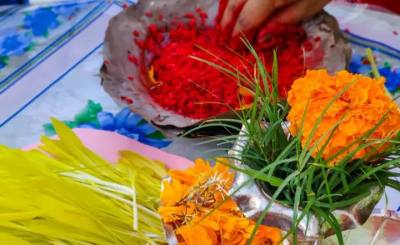
Dashain Festival - The Most Celebrated Nepalese Holiday
Others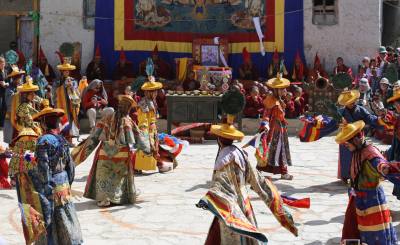
Exploring the Enchanting Mustang Valley: A Must-Visit Destination in 2023
Trekking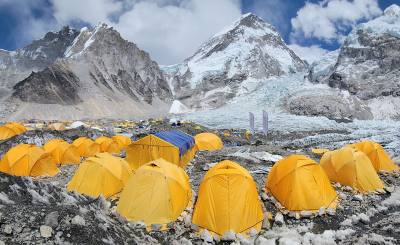
International Mt. Everest Day | 70 years of Amazing Accomplishments
Others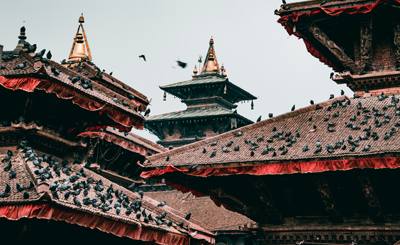
Nepal: A Melting Pot of Culture, Tradition, and Hospitality
Others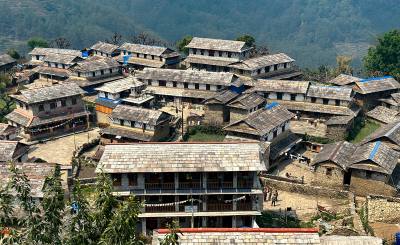
Ghandruk - A Cultural and Natural Heaven in the Annapurna Range
Trekking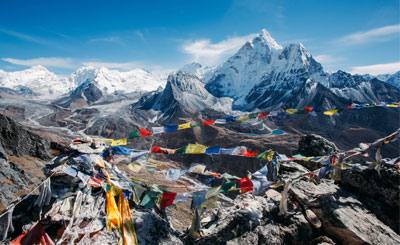
Surviving the Everest Base Camp Trek: Overcoming the Challenges of Altitude and Weather
Trekking
Related Blog(s)
- Exploring the Enchanting Mustang Valley: A Must-Visit Destination in 2023
- Ghandruk - A Cultural and Natural Heaven in the Annapurna Range
- Surviving the Everest Base Camp Trek: Overcoming the Challenges of Altitude and Weather
- China adds Nepal in top tourist destinations for its citizen
- Nepal Bans Solo Trekking, Except in Everest Region From Arpril 1, 2023
- Top 10 Best Treks in Nepal
- Mardi Himal Trek: A Hidden Gem in the Annapurna Region
- A Dream place for homies and outsider: Upper Mustang, Nepal
- Manaslu Circuit Trek V/S Everest Base Camp Trek
- Trip of a Lifetime
- Free Trip in Nepal
- 20 REASON TO VISIT NEPAL 2023
- Aware with altitude sickness.
- How to hire a guide in Nepal???
- Aware with altitude sickness.
- Best seven selling trekking in Nepal
- Top 7 food you can't miss when you travelling in Nepal
- Rara Lake Trek
- The best five view point in Nepal
- TOP 10 REASONS TO VISIT NEPAL
- Top Five Popular Trekking destination in Nepal


